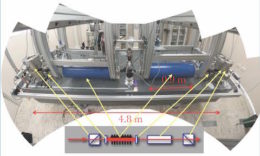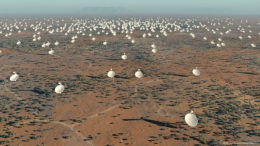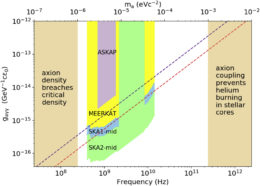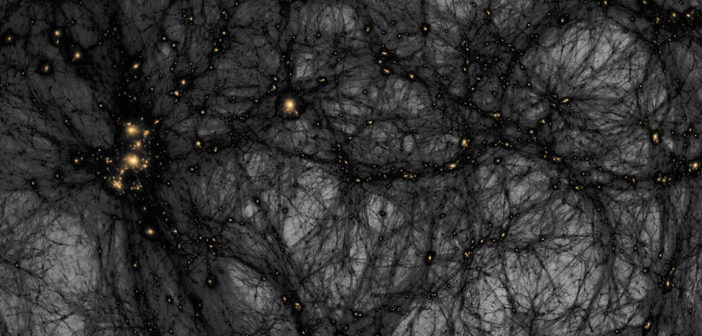In the search for dark matter, the most commonly accepted candidates are invisible, massive particles commonly referred to as WIMPs. But as time passes and we still haven’t detected WIMPs, alternative scenarios are becoming more and more appealing. Prime among these is the idea of axions.
A Bizarre Particle

The Italian PVLAS is an example of a laboratory experiment that attempted to confirm the existence of axions. [PVLAS]
Today, after many unsuccessful searches, experiments and theory tell us that if axions exist, their masses must lie between 10-6–10-3 eV. This is minuscule — an electron’s mass is around 500,000 eV, and even neutrinos are on the scale of a tenth of an eV!
But enough of anything, even something very low-mass, can weigh a lot. If they are real, then axions were likely created in abundance during the Big Bang — and unlike heavier particles, they can’t decay into anything lighter, so we would expect them all to still be around today. Our universe could therefore be filled with invisible axions, potentially providing an explanation for dark matter in the form of many, many tiny particles.

Artist’s impression of the central core of proposed Square Kilometer Array antennas. [SKA/Swinburne Astronomy Productions]
How Do We Find Them?
Axions barely interact with ordinary matter and they have no electric charge. One of the few ways we can detect them is with magnetic fields: magnetic fields can change axions to and from photons.
While many studies have focused on attempting to detect axions in laboratory experiments, astronomy provides an alternative: we can search for cosmological axions. Now scientists Katharine Kelley and Peter Quinn at ICRAR, University of Western Australia, have explored how we might use next-generation radio telescopes to search for photons that were created by axions interacting with the magnetic fields of our galaxy.
Hope for Next-Gen Telescopes

Potential axion coupling strengths vs. mass (click for a closer look). The axion mass is thought to lie between a µeV and a meV; two theoretical models are shown with dashed lines. The plot shows the sensitivity of the upcoming SKA and its precursors, ASKAP and MEERKAT. [Kelley&Quinn 2017]
The authors then compare this signature to the detection capabilities of upcoming radio telescope arrays. They show that the upcoming Square Kilometer Array and its precursors should have the capability to detect signs of axions across large parts of parameter space.
Kelley and Quinn conclude that there’s good cause for optimism about future radio telescopes’ ability to detect axions. And if we did succeed in making a detection, it would be a triumph for both particle physics and astrophysics, finally providing an explanation for the universe’s dark matter.
Citation
Katharine Kelley and P. J. Quinn 2017 ApJL 845 L4. doi:10.3847/2041-8213/aa808d

3 Comments
Pingback: DM: detect axions via radio telescope?
Pingback: TELESCOPIO SKA – Amici della Specola Vaticana
Pingback: SKA TELESCOPE – Friends of the Vatican Observatory